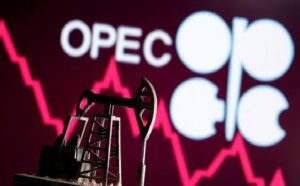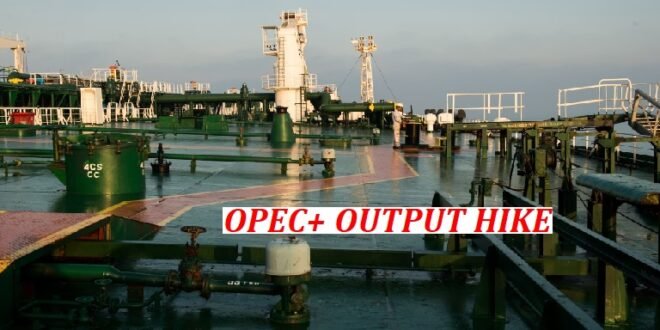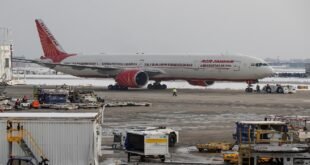09-07-2025
VIENNA: Oil prices eased on Tuesday after rising almost 2% in the previous session, as investors assessed new developments on US tariffs and a higher-than-expected OPEC+ output hike for August.
Brent crude futures dropped 21 cents at $69.37 a barrel by 0041 GMT. US West Texas Intermediate crude fell 24 cents at $67.69 a barrel.
 US President Donald Trump on Monday began telling trade partners which included major suppliers South Korea and Japan as well as smaller US exporters like Serbia, Thailand and Tunisia that sharply higher US tariffs will start August 1, marking a new phase in the trade war he launched earlier this year.
US President Donald Trump on Monday began telling trade partners which included major suppliers South Korea and Japan as well as smaller US exporters like Serbia, Thailand and Tunisia that sharply higher US tariffs will start August 1, marking a new phase in the trade war he launched earlier this year.
Trump’s tariffs have prompted uncertainty across the market and concerns they could have a negative effect on the global economy and, consequently, on oil demand.
However, there are some signs current demand remains strong, particularly in the US, the world’s biggest oil consumer, which has supported prices. A record 72.2 million Americans were projected to travel more than 50 miles (80 km) for Fourth of July vacations, data from travel group AAA showed last week.
Investors were bullish heading into the holiday period with data from the US Commodity Futures Trading Commission released on Monday showing money managers raised their net-long futures and options positions in crude oil contracts in the week up to July 1.
Regarding supplies, on Saturday the Organization of the Petroleum Exporting Countries and allies, a group known as OPEC+, agreed to raise production by 548,000 barrels per day in August, exceeding the 411,000-bpd hikes they made for the prior three months.
The decision removes nearly all of the 2.2 million-bpd of voluntary cuts and analysts at Goldman Sachs expect OPEC+ to announce a final 550,000-bpd increase for September at the next meeting on August 3.
However, the actual output increase has been smaller than the announced levels so far and most of the supply has been from Saudi Arabia, analysts said.
 Two questions stand out after the decision by OPEC+ to accelerate increases in crude oil output; who is going to buy the extra crude, and will the group actually export the additional barrels they say they are going to produce?
Two questions stand out after the decision by OPEC+ to accelerate increases in crude oil output; who is going to buy the extra crude, and will the group actually export the additional barrels they say they are going to produce?
OPEC+ agreed at a weekend meeting to raise production by 548,000 barrels per day (bpd) in August, up from the 411,000 bpd the group had approved for May, June and July, and 138,000 bpd for April.
The production boost will come from eight members of the group – Saudi Arabia, Russia, the United Arab Emirates, Kuwait, Oman, Iraq, Kazakhstan and Algeria.
The increase for August means that the eight will have unwound 1.919 million bpd of the voluntary 2.2 million bpd they had imposed last year in a bid to support crude prices.
OPEC+ cited what it called “steady global economic outlook and current healthy market fundamentals” in the statement announcing the increased August output, sticking to a theme from its recent communiques that the oil market is in fine shape.
However, the reality may not be quite as rosy as OPEC+ paints, with tepid demand growth in major consumers such as China, the world’s top oil importer.
China’s crude imports barely rose in the first five months of the year, with official data showing a gain of 0.3%, or 28,500 bpd, to 11.1 million bpd.
The growth rate will likely tick up when June data is released next week, with LSEG Oil Research expecting imports of 11.96 million bpd for the month, up from the customs number of 11.30 million bpd for June 2024. (Int’l News Desk)
 Pressmediaofindia
Pressmediaofindia




